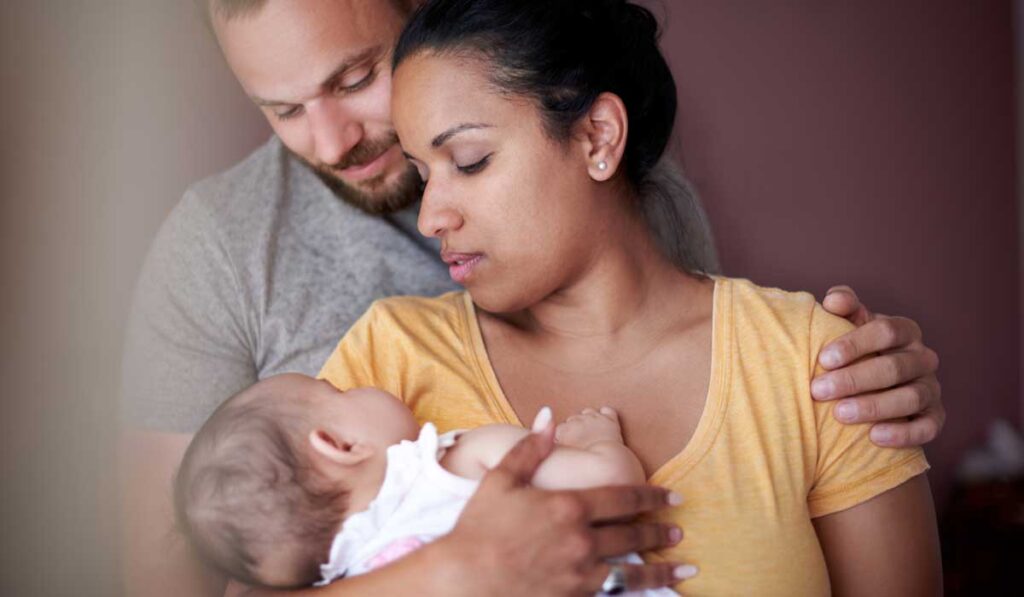According to a recent report published in Women’s Health Issues, filling an opioid prescription after a vaginal delivery is associated with an increased risk of serious opioid-related events, regardless of dose. The finding could significantly impact prescribing guidelines.
“What this study shows is that because there is no ‘safe’ opioid dose, we recommend against routine or automatic prescribing of opioids after vaginal delivery,” said Andrew Wiese, Ph.D., first author on the study and a pharmacoepidemiologist at Vanderbilt University Medical Center. “Postpartum pain management should be an individual level, shared decision between the woman and the provider.”
Opioid Prescribing After Childbirth
Wiese is part of a team of investigators at Vanderbilt that have published several studies outlining variation and risks associated with opioid prescribing among new mothers. Opioid prescribing is nearly universal among women after cesarean delivery and quite common after vaginal delivery.
“We did not find evidence that there was a completely safe dose after an uncomplicated vaginal delivery.”
One study published in the Annals of Internal Medicine and led by Sarah Osmundson, M.D., an associate professor of obstetrics and gynecology at Vanderbilt, revealed that the number of prescriptions filled in the postpartum period is associated with an increased risk of serious opioid-related events.
“That was an important finding and not something that had been published previously,” Wiese explained. “It led us to wonder whether the dose of that first prescription might be associated with subsequent serious opioid-related events.”
No Completely “Safe” Dose
The new study examined roughly 147,000 women enrolled in TennCare – Tennessee’s Medicaid program – between 2007 and 2014 who underwent vaginal deliveries and had received one or fewer opioid prescriptions prior to delivery. Across all dose categories, filling an outpatient opioid prescription within four days after vaginal delivery was associated with an increased risk of developing a serious opioid-related event, including becoming a persistent opioid user, developing an opioid use disorder or experiencing an opioid-related overdose or death.
“The biggest take-away from this study is that the prescribing of opioids should not be something that is automatically done after vaginal delivery.”
Even women prescribed less than 100 MME (morphine milligram equivalent) – roughly equivalent to 14 oxycodone pills or 20 hydrocodone (5 mg strength) – faced a 52 percent increase in the risk of a serious opioid-related event compared with those who did not fill a prescription.
Said Wiese, “It’s not that dose is unimportant, because at extremely high doses, that’s where we saw the highest risks. However, we did not find evidence that there was a completely safe dose after an uncomplicated vaginal delivery.”
Routine Postpartum Prescribing
The study also found that a little over half of women (53.2 percent) filled at least one opioid prescription within four days of a vaginal delivery. “That was a lot higher than we were expecting,” Wiese said.
On a national level, Wiese explains, there is wide variation in opioid prescribing after vaginal delivery. “There are certain regions and hospitals where it’s very rare to see an opioid prescribed in the postpartum period after an uncomplicated vaginal delivery. But there are several regions and several hospitals where it’s still common, like we’ve seen in Tennessee.”
That suggests to Wiese that there is routine postpartum prescribing that may represent provider preference rather than individual patient needs. “The biggest take-away from this study is that the prescribing of opioids should not be something that is automatically done after vaginal delivery,” Wiese said.
Revised Guidelines Needed
The findings from the study could affect how clinicians consider prescribing opioids for women after vaginal births in the future, but establishing best practices is still unclear.
“Our observation that no ‘safe’ opioid dose exists does raise some serious concern, and really should force researchers and clinical providers to take a hard look at what our routine opioid prescribing practices for uncomplicated vaginal births are, even at low doses, in Tennessee and beyond,” Wiese said.




